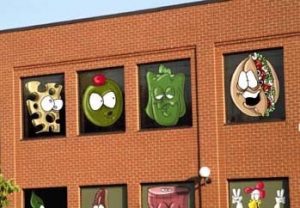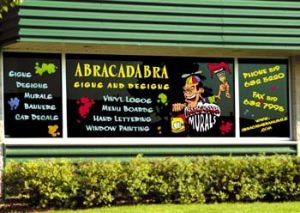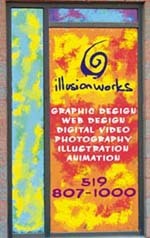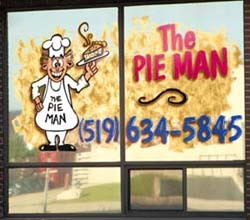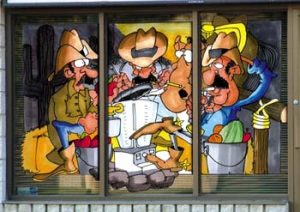An article suggesting fun summer activities for parents and preschoolers said that kids love to be creative with paint, especially when their canvas is a window. Although the writer presented some seemingly great ideas — for example, that paint, when mixed with detergent, is easy to remove from glass — I wasn’t convinced that arming my five-year-old daughter with paint and creative freedom was going to be fun for me.
After all, preschoolers aren’t seasoned signpainters capable of creating artful window splashes and cleaning up their own messes.
As a teenager, sign artist Steve Greer, owner and operator of Ayr, Ontario, Canada-based Abracadabra Signs and Designs (www.abracadabramurals.com), realized his talents.
He said, "I’ve always had a love for art, and I excelled in it throughout high school. I’ve always been good at cartooning and creating off-the-wall stuff."
While working as a bar doorman, Steve was asked to paint some murals for a new establishment. He accepted the job and embarked on a new career. In business for nine years, Abracadabra Signs and Designs employs four full-time cartoonists, and specializes in the design and fabrication of unique signs and creative murals, including chalkboards, menus, banners, car decals, lawn ads, foam sculptures and window splashes.
From Steve’s experience, businesses employ window splashes for advertising and decorative purposes. He notes that splashes — whether they’re used to advertise a specific brand or service, or observe a holiday — are fun and noticeable. Early in his career, Steve worked as a "traveling artist" and painted numerous windows. However, he soon realized he could earn more money by fabricating signage components in-house. Today, window splashes comprise 10% of his business.
Not surprisingly, businesses near busy intersections benefit the most from window splashes. To make splashes stand out, Steve usually applies a white primer to the window, because, over the years, he’s learned that bright colors against a white background — as opposed to a transparent one — are more visible. Using a china marker, he typically hand draws a decorative or advertising sign onto the glass. Then, using lettering quills, standard-sized brushes and/or small rollers, he paints his artwork — the brighter the colors, the better.
Although he draws much of his artwork freehand, Steve notes that, when dealing with oversized letters, he prefers to plot the letters on a computer and then pounce the paper patterns onto a window.
For short-term/seasonal applications on non-tinted windows, he prefers 1Shot
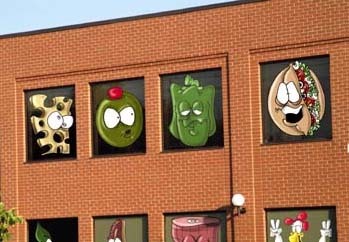

 Tip Sheet1 week ago
Tip Sheet1 week ago
 Ask Signs of the Times3 days ago
Ask Signs of the Times3 days ago
 Photo Gallery1 day ago
Photo Gallery1 day ago
 Real Deal1 week ago
Real Deal1 week ago
 Benchmarks6 days ago
Benchmarks6 days ago
 Editor's Note2 weeks ago
Editor's Note2 weeks ago
 Women in Signs1 week ago
Women in Signs1 week ago
 Photo Gallery1 week ago
Photo Gallery1 week ago
